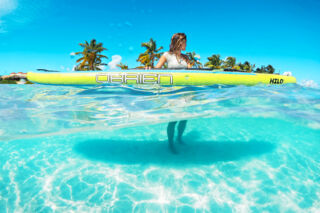Turks and Caicos Stand-up Paddleboarding
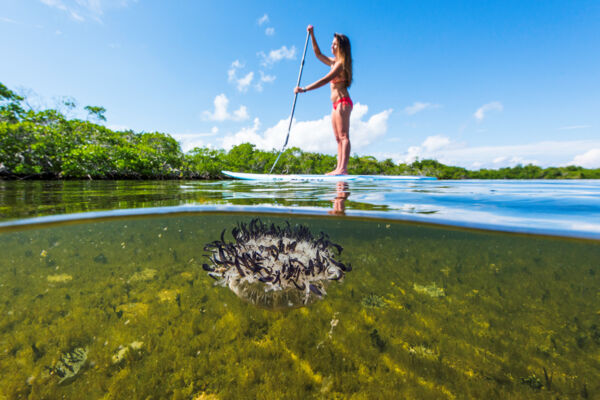
Paddleboarding is one of the most popular water sports in the Turks and Caicos, has a low environmental impact, and is great for keeping in shape. Paddleboarding is also commonly known as stand-up paddleboarding and SUPing. This water sport is very easy and quick to learn, and equipment is often available at many of the resorts and vacation rental villas in the country. Several excursion businesses also offer guided eco-tours by paddleboard and kayak in the spectacular marine wetlands of our islands.
An excellent core workout, SUPing can be done by almost anyone, with very little practice. Wave surfing definitely requires quite a bit more dedication and experience, yet flat water cruising, general fun on the water, and exploring the wetlands of the Turks and Caicos is easily possible after only 5 minutes of instruction and a little practice.
One of the great advantages that paddleboarding offers over kayaking is a much better view into the water. The Turks and Caicos is home to an incredible marine environment that teems with wildlife, and the added height that paddleboarders have over the water makes it much easier to see the fish, stingrays, turtles, sharks, starfish, conch, and coral that are found in our mangrove wetlands and reefs.
Eco-Tours and Adventures
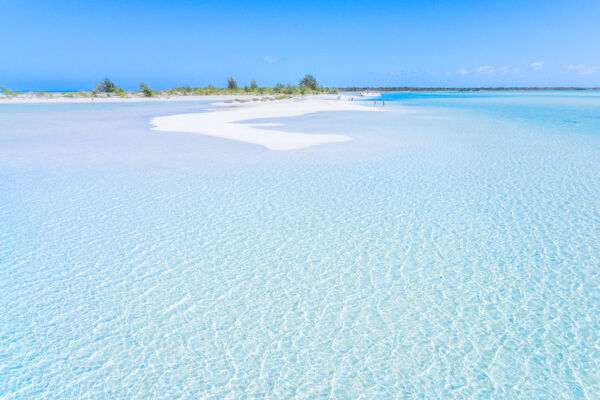
Eco-tours, where a group of paddleboarders or kayakers are led by a knowledgeable guide, are one of the best ways to experience our wetlands and mangrove estuaries. So many interesting creatures can be seen in the Turks and Caicos, yet many are also masters of camouflage, and someone with experience simply knows where to look.
One of the most popular eco-tour destinations in the country is the Princess Alexandra Nature Reserve, found off the eastern Leeward region of Providenciales. Here, the uninhabited islands of Mangrove Cay, Donna Cay, and Little Water Cay are home to a wide array of juvenile marine life and the fascinating Turks and Caicos Islands rock iguana.
Some of the more interesting sightings include nurse sharks, lemon sharks, stingrays, conch, honeycomb cowfish, upside-down jellyfish, several varieties of starfish, green turtles, hawksbill turtles, and of course barracudas. Birdlife includes several types of herons and flamingos, oystercatchers, ospreys, pelicans, stilts, terns, and more.
Paddleboarding Equipment
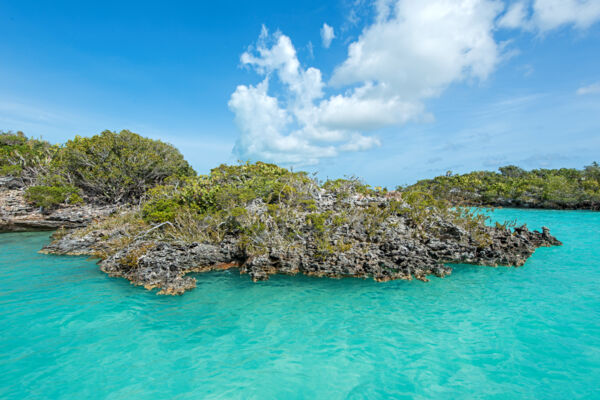
Paddleboarding doesn’t require much gear, and a board, a long handled paddle, a leash or shock cord, and a personal flotation device (life vest) is all you need. The leash simply keeps the board from drifting away from you if you fall in, and should be used at all times.
As is the case with nearly all water sports, paddleboarding equipment varies greatly. Most accommodations tend to have basic and stable boards which are easy to use (yet a little heavy and slow). Some of the eco-tour companies have better quality lightweight, touring, and racing boards, which track and cruise in a superior way. Often, it’s best to start on the basic recreational variety, and upgrade once proficiency improves.
Several businesses on the island of Providenciales provide guided tours, and are also able to rent and deliver equipment for guests staying at a vacation rental.
Paddleboarding Locations
How Do the Different Islands Compare?
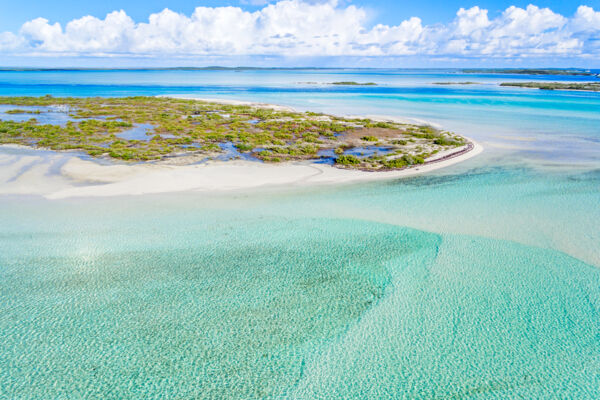
Consisting mainly of smaller cays, the Turks Islands do not have the extensive mangrove wetlands that can be found throughout the Caicos Islands. Typically, most paddleboarding that takes place on the Turks Islands is simply on the open water near the beach.
Comparatively, the Caicos Islands offer more to see. Along with having vastly more expansive wetlands, the larger and more complex coastline of these islands presents miles of sheltered and unique coastlines.
Due to being the primary overnight tourist destination in the country, Providenciales has by far the most water sports businesses and consequently the widest selection of paddleboard rentals and tours. Although the majority of eco-tours take place in the Leeward and Mangrove Cay area of Providenciales, trips to more remote locations and other islands are easy to arrange.
Providenciales
Providenciales, the main tourism island in the country, offers great and easily accessible wetlands, and by far the widest selection of business and tour options. Most oceanfront accommodations include complimentary paddleboard and kayak use, so you’ll likely have a chance to at least try this water sport free of charge.
The Princess Alexandra Nature Reserve and the islands of Mangrove Cay, Donna Cay, Little Water Cay, and Half Moon Bay are popular paddling locations near Providenciales, as well as the unique Chalk Sound Lagoon.
North Caicos and Middle Caicos
The central islands of North Caicos and Middle Caicos are connected by a road causeway, and collectively they make up (by far) most of the land in our archipelago. These two islands are surrounded by extensive and verdant wetlands, channels, and lagoons, yet most great locations are far more remote than those on Providenciales.
The wetlands of North Caicos and Middle Caicos are spectacular, yet are best visited either on a guided eco-tour, or by seasoned and experienced paddlers. In any case, bird and marine life sightings are unrivaled.
Bottle Creek Lagoon, located between the two islands, is the most popular paddle spot in the area. A few companies offer adventures where kayaks or paddleboards and guests are dropped off up wind on Middle Caicos, with the landing destination being down wind on North Caicos—all in all a really beautiful trip.
Grand Turk
Other than simply paddling on the open ocean fronting the hotels, decent paddleboarding is mainly limited to the interior North Creek lagoon. Although a calm and safe place to explore, wildlife, mangrove groves and sights in this creek don’t quite match what can be seen at many of the other islands in the country.
South Caicos
South Caicos has recently started gaining attention as a tourism destination, and with good reason. There are extensive and exquisite wetlands and coasts to explore, with an incredibly scenic channel system to the north of the island.
Bell Sound National Park and the adjacent Plandon Cay Cut area is a favorite kayaking and paddleboarding location near South Caicos.
The uninhabited cays between South Caicos and East Caicos hide some of the most impressive bird and marine life sightings in the Turks and Caicos, with large numbers of ospreys, pelicans, frigatebirds, sharks, and turtles.
Safety and Guidelines

Paddleboarding is generally a very safe water sport, yet as the sport typically takes place on the unpredictable ocean, paddlers should be aware of a few things.
- When you lose balance and fall (everyone does, doesn’t matter how good you are!) simply fall into the water and avoid the board, and don’t try to catch yourself. Many of the relativity few SUP related injuries are arm and leg issues caused by falling onto the board.
- Be aware of the wind and currents! One of the most common causes of concern to new paddlers is finding out that their return journey is much more difficult, especially after sailing downwind for an hour! When standing on a paddleboard, the body acts as a sail and it’s surprising how fast you can move downwind without paddling on breezy days! The easiest way to avoid issues is to begin your excursion into the wind, and your return should be easy!
- Know your limitations. If you are just beginning to paddleboard, don’t try to surf or cover long distances into areas that you’re unfamiliar with.
- Keep your gear simple. The large, wide, and stable recreational boards are the easiest to learn on, not the specialized racing boards or small surf boards. Bring and use a leash, personal flotation device, and drinking water, but try to keep non-essentials to a minimum! When you fall in, you don’t want to have to freedive for your possessions!
- In most locations, it’s possible to find sheltered routes and areas to paddle, which are much easier to traverse than the open and breezy areas. In the Turks and Caicos, the typical winds usually come from the southeast. This is offshore for Grace Bay Beach, yet when close to the beach the land and buildings often block most of the wind. When in the mangrove estuaries and wetlands, one side is often shielded quite a bit from the wind. Look for the smoother water surface.
- Currents can be an issue at times, but are often restricted to the channels between islands and lose strength after a distance. If making headway is difficult, paddle close to one of the banks or the shore, as currents should be less pronounced, and you’ll be able to take a break if needed.
Tour Companies
